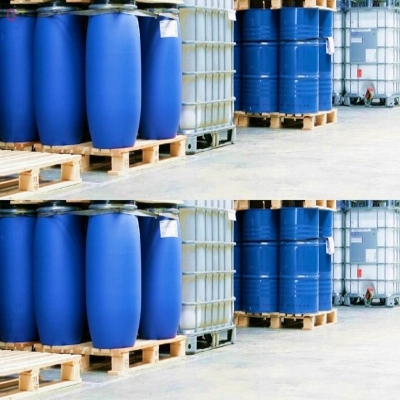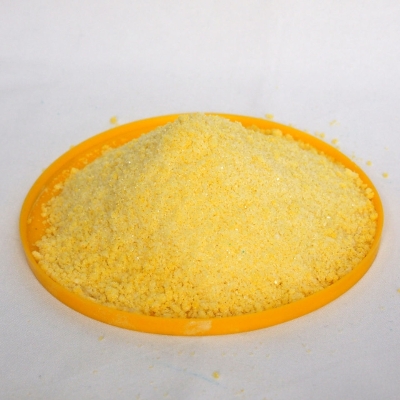-
Categories
-
Pharmaceutical Intermediates
-
Active Pharmaceutical Ingredients
-
Food Additives
- Industrial Coatings
- Agrochemicals
- Dyes and Pigments
- Surfactant
- Flavors and Fragrances
- Chemical Reagents
- Catalyst and Auxiliary
- Natural Products
- Inorganic Chemistry
-
Organic Chemistry
-
Biochemical Engineering
- Analytical Chemistry
-
Cosmetic Ingredient
- Water Treatment Chemical
-
Pharmaceutical Intermediates
Promotion
ECHEMI Mall
Wholesale
Weekly Price
Exhibition
News
-
Trade Service
[ Hot attention from Chemical Machinery and Equipment Network ] Recently, according to reports, China's industrial production continued to maintain a relatively obvious growth trend in the first quarter due to the continuous improvement of the consumption environment, the increase in residents' income, and the release of the effect of the policy of expanding domestic demand.
In the first quarter, the national industrial added value above designated size increased by 24.
5% year-on-year and 2.
01% month-on-month.
Among them, the added value of the industrial enterprises above designated size in March increased by 14.
1% year-on-year; the month-on-month increase was 0.
60%.
Chemical machinery and equipment network hotspots pay attention to chemical machinery and equipmentIn the first quarter, the national industrial added value above designated size increased by 24.
5% year-on-year and 2.
01% month-on-month.
Among them, the added value of the industrial enterprises above designated size in March increased by 14.
1% year-on-year; the month-on-month increase was 0.
60%.
Domestic industrial production increased significantly in the first quarter, and the manufacturing industry was also an important point of increase.
It is understood that since the first quarter, high-tech and emerging manufacturing industries have continued strong growth, with a year-on-year increase of 39.
9% and 31.
2% respectively.
It is worth mentioning that in the manufacturing industry, the development of China's robotics field is very eye-catching.
In addition to covering 130 industrial categories, it has rapidly expanded from automotive and electronic applications to building materials, electricity, medicine, agriculture, construction and medical rehabilitation, public services, smart homes, and many other fields; revenue has also risen sharply .
Statistics show that in 2020, China's robot revenue has exceeded 100 billion for the first time.
It is understood that since the first quarter, high-tech and emerging manufacturing industries have continued strong growth, with a year-on-year increase of 39.
9% and 31.
2% respectively.
It is worth mentioning that in the manufacturing industry, the development of China's robotics field is very eye-catching.
In addition to covering 130 industrial categories, it has rapidly expanded from automotive and electronic applications to building materials, electricity, medicine, agriculture, construction and medical rehabilitation, public services, smart homes, and many other fields; revenue has also risen sharply .
Statistics show that in 2020, China's robot revenue has exceeded 100 billion for the first time.
Industry analysts believe that the main reason for this phenomenon is that the epidemic since last year has significantly accelerated the development of the domestic industrial robot industry.
On the one hand, due to the needs of the epidemic, manufacturing companies have accelerated the process of machine replacement in order to save time and effort; on the other hand, demand in many industries after the epidemic has also seen explosive growth, such as the two current industrial robots in the automobile and electronics industries.
Areas where the application is more mature.
On the one hand, due to the needs of the epidemic, manufacturing companies have accelerated the process of machine replacement in order to save time and effort; on the other hand, demand in many industries after the epidemic has also seen explosive growth, such as the two current industrial robots in the automobile and electronics industries.
Areas where the application is more mature.
Looking back at 2020, in fact, robots have also appeared frequently in the pharmaceutical industry.
For example, it has applications in testing, filling, sorting, aseptic transfer, medical logistics storage and other processes, and it has higher work efficiency and accuracy, which can more effectively guarantee the production of medicines, reduce labor costs, and reduce Labor intensity.
At present, from the perspective of the application status of industrial robots in the pharmaceutical field, industrial robots that are widely used in the pharmaceutical industry mainly include intelligent detection robots, automatic drug sorting and cartoning production lines, robot automatic sterilization logistics systems, and aseptic production Intelligent robots, robot packing and palletizing production lines, AGVs, etc.
, these robots each play a vital role in the pharmaceutical production process.
For example, it has applications in testing, filling, sorting, aseptic transfer, medical logistics storage and other processes, and it has higher work efficiency and accuracy, which can more effectively guarantee the production of medicines, reduce labor costs, and reduce Labor intensity.
At present, from the perspective of the application status of industrial robots in the pharmaceutical field, industrial robots that are widely used in the pharmaceutical industry mainly include intelligent detection robots, automatic drug sorting and cartoning production lines, robot automatic sterilization logistics systems, and aseptic production Intelligent robots, robot packing and palletizing production lines, AGVs, etc.
, these robots each play a vital role in the pharmaceutical production process.
Take the intelligent detection robot as an example.
For a long time in the past, the staff in the pharmaceutical workshop basically relied on manual light inspection of medicines.
The naked-eye inspection method is not only powerful, but also prone to errors, which brings hidden dangers to the quality and safety of medicines; and the intelligent inspection robot on the filling production line can not only quickly detect glass dander, hair, fiber and other foreign objects in the bottled liquid medicine.
, It can also detect the damage of the bottle itself and the packaging quality of the bottle mouth, and can realize automatic sorting of defective products.
Therefore, compared with the traditional manual light inspection, the application of intelligent inspection robots in the pharmaceutical industry can not only greatly improve the level of inspection capabilities, but also further ensure the safety of medicines.
For a long time in the past, the staff in the pharmaceutical workshop basically relied on manual light inspection of medicines.
The naked-eye inspection method is not only powerful, but also prone to errors, which brings hidden dangers to the quality and safety of medicines; and the intelligent inspection robot on the filling production line can not only quickly detect glass dander, hair, fiber and other foreign objects in the bottled liquid medicine.
, It can also detect the damage of the bottle itself and the packaging quality of the bottle mouth, and can realize automatic sorting of defective products.
Therefore, compared with the traditional manual light inspection, the application of intelligent inspection robots in the pharmaceutical industry can not only greatly improve the level of inspection capabilities, but also further ensure the safety of medicines.
In fact, in recent years, in addition to pharmaceutical companies that are continuously accelerating the upgrading of the intelligence of production lines and the replacement of intelligent equipment, some pharmaceutical machinery companies are also focusing on promoting the "robot instead of labor" production model and developing more intelligent products.
It is reported that many pharmaceutical machinery companies are using Internet technology, Internet of Things technology, automated logistics systems and other technologies to continuously break traditional technological processes.
It is reported that many pharmaceutical machinery companies are using Internet technology, Internet of Things technology, automated logistics systems and other technologies to continuously break traditional technological processes.
For example, a sterile robot developed by a pharmaceutical machine company can automatically complete the unpacking and material transfer of pre-filled syringes, integrating film tearing, paper removal, filling, and stoppering.
This will not only greatly reduce the probability of drug contamination, but also enable the entire cycle of drug production to be digitized and traceable throughout the entire process.
This will not only greatly reduce the probability of drug contamination, but also enable the entire cycle of drug production to be digitized and traceable throughout the entire process.
In general, with the rapid development of the pharmaceutical industry in recent years, upstream pharmaceutical equipment companies have undergone earth-shaking changes in the way they produce equipment: less human and unmanned production, dual intelligent production models, etc.
have gradually become the industry’s The general trend.
In this context, the industry predicts that in the future, as more fully automatic and intelligent industrial robots are used in pharmaceutical production, it will help pharmaceutical companies to accelerate the realization of intelligent production in the pharmaceutical industry and help the pharmaceutical industry move toward "intelligent manufacturing.
" Accelerate the transformation and upgrading of the direction, and better escort the safety of medicines.
have gradually become the industry’s The general trend.
In this context, the industry predicts that in the future, as more fully automatic and intelligent industrial robots are used in pharmaceutical production, it will help pharmaceutical companies to accelerate the realization of intelligent production in the pharmaceutical industry and help the pharmaceutical industry move toward "intelligent manufacturing.
" Accelerate the transformation and upgrading of the direction, and better escort the safety of medicines.
Original title: "Robots" make the manufacturing industry even more powerful, and it will also have a lot to do in the pharmaceutical field







